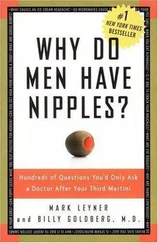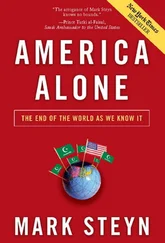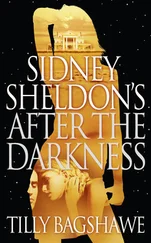The music is briefly disturbed by a low rumble from the front yard, and our time-traveler glances through the window: a metal conveyance is coming up the street at an incredible speed—with not a horse in sight. It’s enclosed with doors and windows, like a house on wheels, and it turns into the yard, and the doors open all at once, and two grown-ups and four children all get out—just like that, as if it’s the most natural thing in the world!
He notices there is snow on the ground, and yet the house is toasty warm, even though no fire is lit and there appears to be no stove. A bell jingles from a small black instrument on the hall table. Good heavens! Is this a “telephone”? He’d heard about such things, and that the important people in the big cities had them. But to think one would be here in his very own home! He picks up the speaking tube. A voice at the other end says there is a call from across the country—and immediately there she is, a lady from California talking as if she were standing next to him, without having to shout, or even raise her voice! And she says she’ll see him tomorrow!
Oh, very funny. They’ve got horseless carriages in the sky now, have they?
What marvels! In a mere sixty years!
But then he espies his Victorian time machine sitting invitingly in the corner of the parlor. Suppose he were to climb on and ride even farther into the future. After all, if this is what an ordinary American home looks like in 1950, imagine the wonders he will see if he pushes on another six decades!
So on he gets, and sets the dial for our own time.
And when he dismounts he wonders if he’s made a mistake. Because, aside from a few design adjustments, everything looks pretty much as it did in 1950: the layout of the kitchen, the washer, the telephone…. Oh, wait.
It’s got buttons instead of a dial. And the station wagon in the front yard has dropped the woody look and seems boxier than it did. And the folks getting out seem… larger, and dressed like overgrown children.
And the refrigerator has a magnet on it holding up an endless list from a municipal agency detailing what trash you have to put in which colored boxes on what collection days.
But other than that, and a few cosmetic changes, he might as well have stayed in 1950.
Let’s pause and acknowledge the one exception to the above scenario: the computer. Instead of having to watch Milton Berle on that commode-like thing in the corner, as one would in 1950, you can now watch Uncle Miltie on YouTube clips from your iPhone. But be honest, aside from that, what’s new? Your horseless carriage operates on the same principles it did a century ago. It’s added a CD player and a few cup holders, but you can’t go any faster than you could fifty years back. As for that great metal bird in the sky, commercial flight hasn’t advanced since the introduction of the 707 in the 1950s.
Air travel went from Wilbur and Orville to biplanes to flying boats to jetliners in its first half-century, and then for the next half-century it just sat there, like a commuter twin-prop parked at Gate 27B at LaGuardia waiting for the mysteriously absent gate agent to turn up and unlock the jetway.
Other arenas aren’t quite as static as the modern American airport, but nor do they move at the same clip they used to. When was the last big medical breakthrough? I mean “big” in the sense of something that takes a crippling worldwide disease man has accepted as a cruel fact of life and so clobbers it that a generation on nobody gives it a thought. That’s what the polio vaccine did in 1955. Why haven’t we done that for Alzheimer’s? Today, we have endless “races for the cure,” and colored ribbons advertising one’s support for said races for the cure, and yet fewer cures. It’s not just pink ribbons for breast cancer, and gray ribbons for brain cancer, and white for bone cancer, but also yellow ribbons for adenosarcoma, light blue for Addison’s Disease, teal for agoraphobia, periwinkle for acid reflux, pink and blue ribbons for amniotic fluid embolisms, and pinstripe ribbons for amyotrophic lateral sclerosis. We have had phenomenal breakthroughs in hues of awareness-raising ribbons. Yet for all the raised awareness, very few people seem aware of how the whole disease-curing business has ground to a halt.
Compare the Twenties to the Nineties: in the former, the discovery of insulin and penicillin, plus the first vaccines for tuberculosis, diphtheria, tetanus, whooping cough, on and on. In the last decade of the twentieth century, what? A vaccine for Hepatitis A, and Viagra. Good for erectile dysfunction, but what about inventile dysfunction? In October 1920, a doctor in London, Ontario, Frederick Banting, had an idea as to how insulin might be isolated and purified and used to treat diabetes, which in those days killed you. 1By August 1922, Elizabeth Hughes, the daughter of America’s Secretary of State and a diabetic near death, was being given an experimental course of the new treatment. By January 1923, Eli Lilly & Company were selling insulin to American druggists. That’s it: a little over two years from concept to patient. Not today: the U.S. Food and Drug Administration now adds half a decade to the process by which a treatment makes it to market, and they’re getting slower. Between 1996 and 1999, the FDA approved 157 new drugs. Between 2006 and 2009, the approvals fell by half—to 74. 2What happens during that half-decade? People die, non-stop—as young Elizabeth Hughes would have died under the “protection” of today’s FDA. Because statism has no sense of proportion. You can still find interesting articles about new discoveries that might have implications for, say, Parkinson’s disease. But that’s all you’ll find: articles, in periodicals, lying around your doctor’s waiting room. The chances of the new discovery advancing from the magazine on the coffee table to your prescription are less and less. To begin the government-approval process is to enter what the cynics of the twenty-first-century research biz call the valley of death.
When America Alone came out, arguing that the current conflict is about demographic decline, globalized psychoses, and civilizational confidence, a lot of folks objected, as well they might: seeing off supple amorphous abstract nouns is not something advanced societies do well. You’re looking at it the wrong way, I was told. Technocratic solutions, new inventions, the old can-do spirit: that’s the American way, and that’s what will see us through.
Well, okay, so where is it?

CRESCENT MOON
Half a century ago, the future felt different. Take 1969, quite a year in the aerospace biz: in one twelve-month period, we saw the test flight of the Boeing 747, the maiden voyage of the Concorde , the RAF’s deployment of the Harrier “jump jet,” and Neil Armstrong’s “giant step for mankind.”
Buzz Aldrin packed a portable tape player with him on Apollo 11, and so Sinatra’s ring-a-ding-ding recording of “Fly Me to the Moon” became the first (human) music to be flown to the moon and played there. 3Had any other nation beaten NASA to it, they’d have marked the occasion with the “Ode to Joy” or Also Sprach Zarathustra , something grand and formal. But there’s something marvelously American about the first human being to place his feet on the surface of a heavenly sphere standing there with a cassette machine blasting out Frank and the Count Basie band in a swingin’ Quincy Jones arrangement—the insouciant swagger of the American century breaking the bounds of the planet.
In 1961, before the eyes of the world, President Kennedy had set American ingenuity a very specific challenge—and put a clock on it: This nation should commit itself to achieving the goal, before this decade is out, of landing a man on the moon and returning him safely to the earth. 4
Читать дальше












